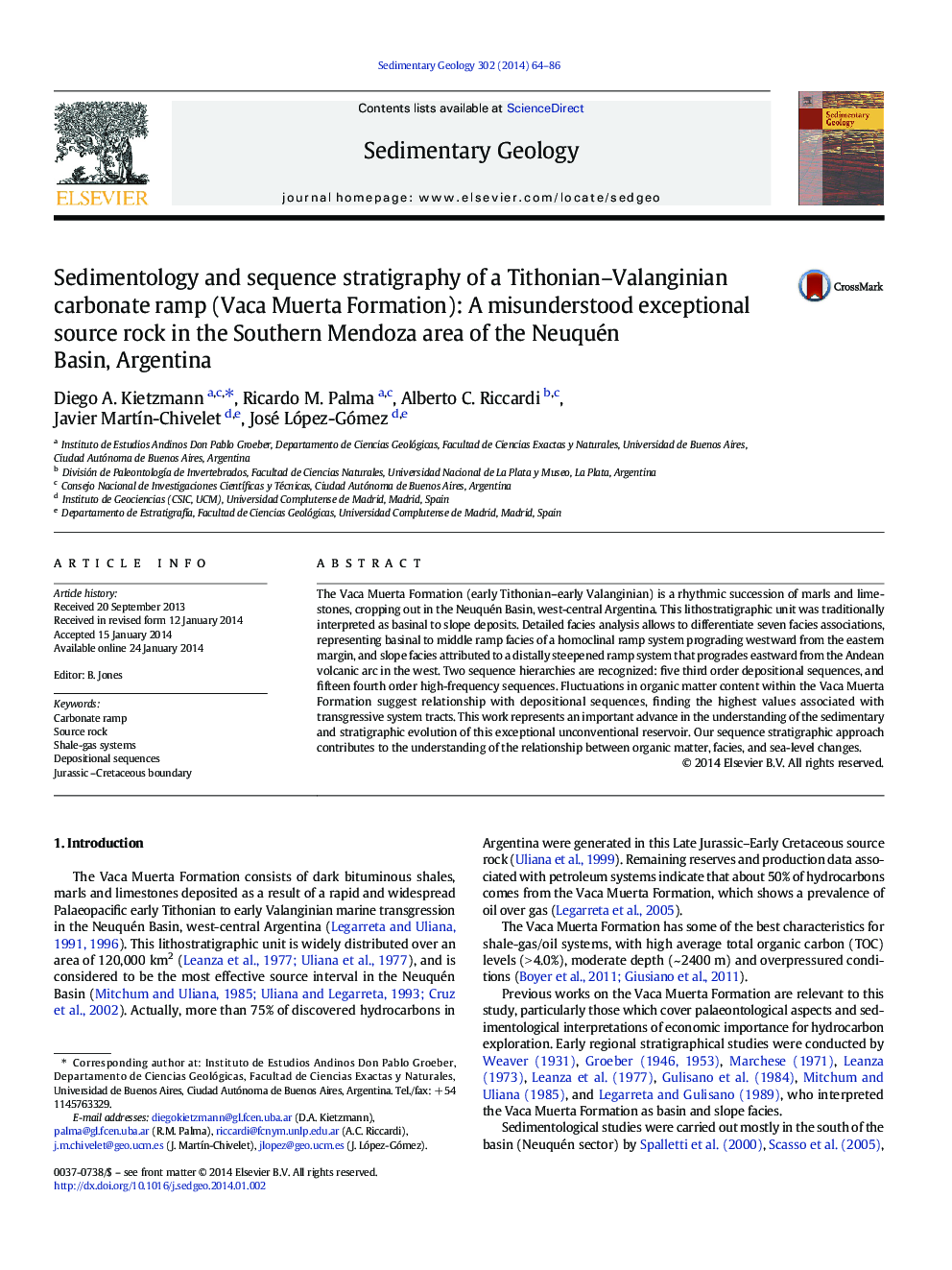| Article ID | Journal | Published Year | Pages | File Type |
|---|---|---|---|---|
| 4689459 | Sedimentary Geology | 2014 | 23 Pages |
The Vaca Muerta Formation (early Tithonian–early Valanginian) is a rhythmic succession of marls and limestones, cropping out in the Neuquén Basin, west-central Argentina. This lithostratigraphic unit was traditionally interpreted as basinal to slope deposits. Detailed facies analysis allows to differentiate seven facies associations, representing basinal to middle ramp facies of a homoclinal ramp system prograding westward from the eastern margin, and slope facies attributed to a distally steepened ramp system that progrades eastward from the Andean volcanic arc in the west. Two sequence hierarchies are recognized: five third order depositional sequences, and fifteen fourth order high-frequency sequences. Fluctuations in organic matter content within the Vaca Muerta Formation suggest relationship with depositional sequences, finding the highest values associated with transgressive system tracts. This work represents an important advance in the understanding of the sedimentary and stratigraphic evolution of this exceptional unconventional reservoir. Our sequence stratigraphic approach contributes to the understanding of the relationship between organic matter, facies, and sea-level changes.
